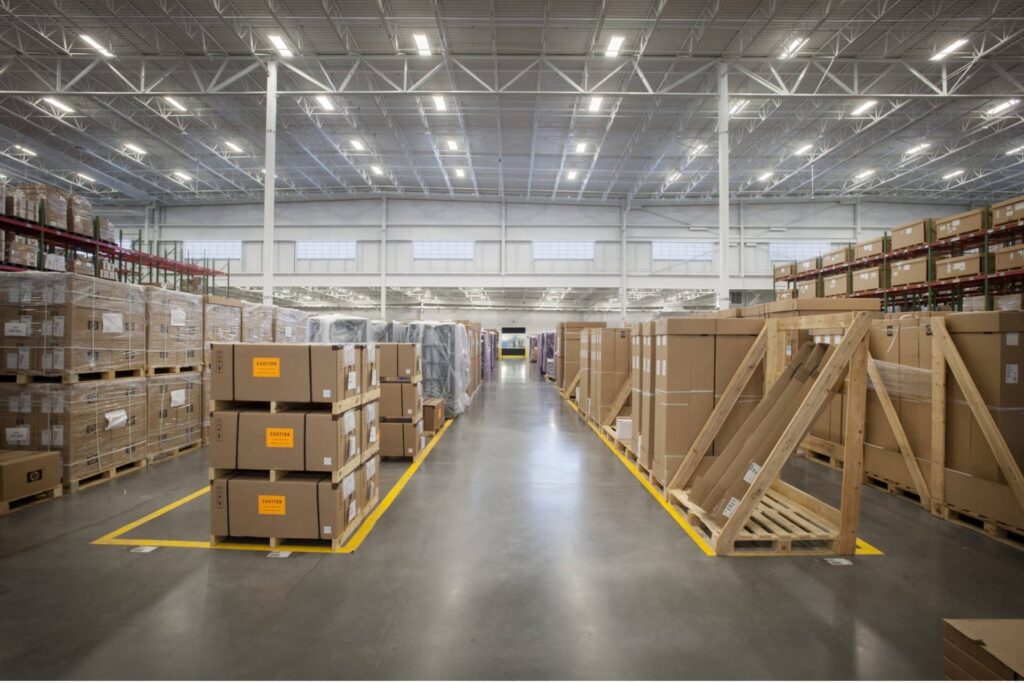Commercial warehouse construction is a significant undertaking that requires meticulous planning, especially when it comes to budgeting. Whether you are expanding an existing facility or starting from scratch, understanding the cost factors involved can help you manage your finances effectively. In this article, we will explore the various aspects of budgeting for commercial warehouse construction, with a particular focus on cost factors and potential savings. So, let’s dive in and discover how to make the most of your budget while ensuring a successful project.
Cost Factors in Commercial Warehouse Construction
- Location and Site Preparation
Choosing the right location for your commercial warehouse is crucial, as it can significantly impact your construction costs. Factors such as accessibility, proximity to transportation routes, and local building regulations can influence the overall expenses. Additionally, site preparation, including land clearing, grading, and utility connections, should be taken into account. By carefully evaluating these factors, you can make informed decisions that align with your budgetary constraints.
- Design and Construction Materials
The design and choice of construction materials have a direct impact on the cost of building a commercial warehouse. While various options are available, commercial steel buildings have gained popularity due to their durability, cost-effectiveness, and flexibility. Steel structures offer faster construction timelines, reduce labor costs, and provide long-term savings through energy efficiency and low maintenance requirements. Investing in a high-quality steel building system can help you achieve cost savings without compromising on quality or structural integrity.
- Size and Layout
The size and layout of your commercial warehouse play a significant role in determining construction costs. Larger structures generally require more materials, labor, and time to complete. However, an efficient layout can optimize the available space, reducing wasted square footage and associated costs. Collaborating with an experienced architect or design professional can help you strike a balance between your desired warehouse size and cost considerations.
- Permits and Regulatory Compliance
Navigating through the permit and regulatory process is an essential part of commercial warehouse construction. Depending on your location, you may be required to obtain permits for zoning, building codes, environmental impact, and more. Failing to comply with these regulations can lead to costly delays and potential penalties. Allocating a portion of your budget for permit fees and compliance-related expenses is essential to ensure a smooth construction process.
- Utilities and Infrastructure
Utilities such as water, electricity, and telecommunications are vital for the functioning of any commercial warehouse. The costs associated with connecting to or extending these services should be factored into your budget. Consideration should also be given to the installation of essential infrastructure, including lighting, ventilation, heating, and cooling systems. Investing in energy-efficient technologies can yield long-term savings by reducing utility bills and minimizing environmental impact.
Savings Opportunities in Commercial Warehouse Construction
- Value Engineering
Value engineering involves a systematic review of the project’s design, materials, and construction methods to identify cost-saving opportunities without compromising functionality or quality. Engaging a skilled contractor or construction manager early in the planning stages can help you explore alternative approaches and suggest value engineering ideas. By reevaluating design elements and selecting more cost-effective options, you can optimize your budget while still achieving your desired outcome.
- Competitive Bidding
Seeking competitive bids from multiple contractors is an effective strategy to secure the best pricing for your commercial warehouse construction project. This process allows you to compare proposals and evaluate the qualifications and experience of potential contractors. Remember, the lowest bid is not always the best option. Consider the contractor’s reputation, expertise, and ability to deliver on time and within budget when making your final decision.
- Material and Equipment Procurement
Cost savings can be achieved through strategic procurement of construction materials and equipment. Building materials, such as steel components, can vary in price, so it’s essential to explore different suppliers and negotiate favorable terms. Additionally, renting or leasing specialized equipment, instead of purchasing outright, can help minimize upfront costs.
- Project Management and Timelines
Efficient project management plays a crucial role in controlling costs during commercial warehouse construction. Clear communication, regular progress meetings, and diligent oversight are necessary to ensure that the project stays on schedule and within budget. Timely decision-making and proactive problem-solving can prevent delays, which can be costly, and keep the project running smoothly.
- Construction Phasing
If your commercial warehouse construction project allows for it, consider phasing the construction process. This involves completing the project in stages or sections, allowing you to spread out the costs over time. By prioritizing essential areas or functions, you can begin operations sooner while continuing to allocate funds for subsequent phases. This phased approach can help ease the burden on your budget while still ensuring progress and functionality.
- Sustainable and Green Building Practices
Incorporating sustainable and green building practices into your commercial warehouse construction can offer long-term cost savings. Energy-efficient lighting, insulation, and HVAC systems can reduce utility expenses. Additionally, implementing renewable energy sources such as solar panels or incorporating water-saving features can lower operating costs in the future. Not only will these practices benefit the environment, but they can also contribute to your budget by reducing ongoing expenses.
Conclusion
Budgeting for commercial warehouse construction requires a comprehensive understanding of the cost factors involved and the potential savings opportunities. By carefully considering location, design, materials, permits, utilities, and implementing cost-saving measures such as value engineering and competitive bidding, you can optimize your budget while achieving your desired outcomes. Remember, collaborating with experienced professionals like Coastal Steel Structures and making informed decisions are key to successfully managing your commercial warehouse construction project.

